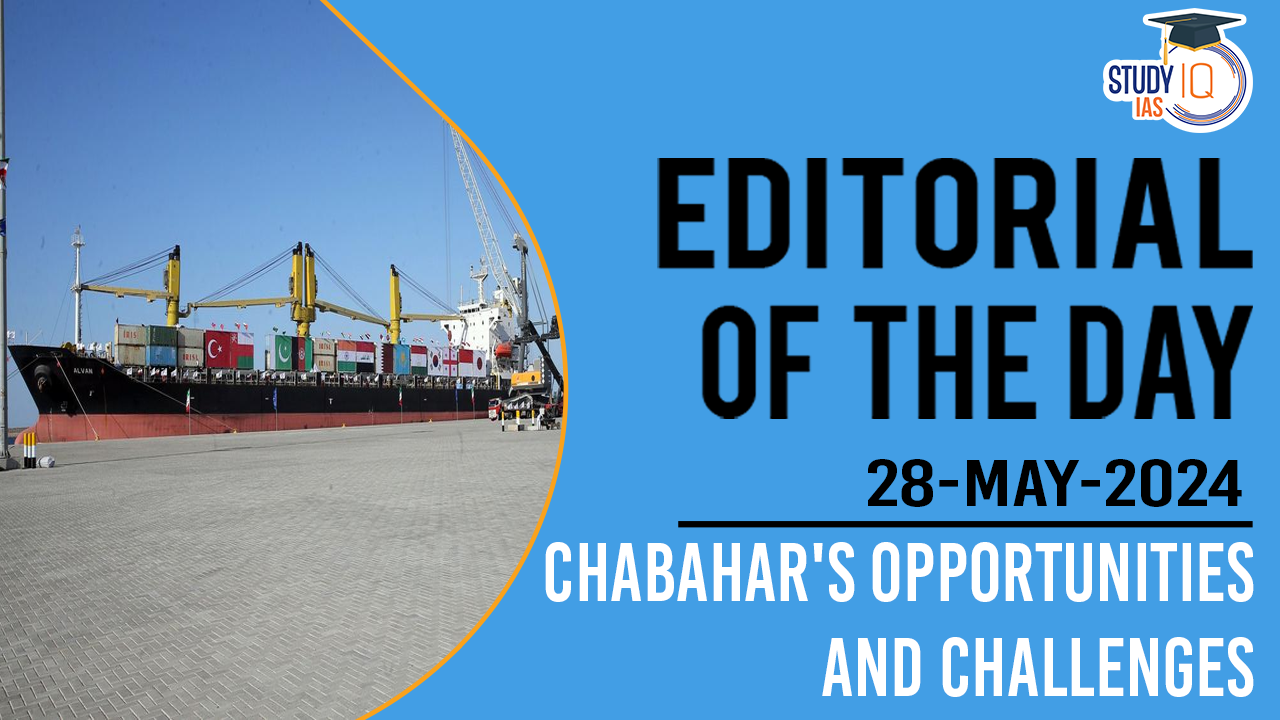Table of Contents
Context
- The recent extension of India’s contract to invest in and operate the Shahid-Behesti terminal at Chabahar Port in Iran for another ten years remains a significant aspect of the economic relations between the two countries.
- This agreement comes amidst challenging geopolitical dynamics in West Asia, including ongoing conflict in Gaza, heightened tensions between Israel and Iran, and political upheaval in Iran following a tragic accident.
Significance of Chabahar Port
- Extended Neighbourhood Strategy: Chabahar Port is pivotal for India’s strategy to enhance connectivity with its extended neighbourhood, particularly Central Asia and Russia, bypassing Pakistan.
- It is an integral part of the International North-South Transport Corridor.
- Support from Afghanistan: The Taliban-led government in Afghanistan supports the port, having pledged an investment of $35 million.
- This indicates the port’s role in providing Afghanistan with alternatives to Pakistani and Chinese-backed ports.
- Sole Vibrant Link: Currently, Chabahar is the primary active project between India and Iran, overshadowing other stagnated or terminated initiatives such as the Farzad-B gas field and the IranoHind shipping company.
- Legacy Project: Initiated in 2003, Chabahar is a legacy project from an era when India was expanding its overseas economic assets, paralleled by other projects like Sakhalin-I in Russia.
Challenges
- Recent Tensions: The contract renewal followed closely after military tensions between Israel and Iran escalated.
- Despite India’s simultaneous engagement with Israel, including the acquisition of Haifa port by India’s Adani Group, the Chabahar deal was not affected.
- S Sanctions: The U.S. administration may impose sanctions against Chabahar.
- Such sanctions could undermine broader strategic goals that benefit both India and the U.S., especially in countering Chinese regional influence.
|
Important facts |
|
Future Prospects
- Diversification of Bilateral Interests: It is crucial for the future stability of India-Iran relations that their collaboration extends beyond the singular focus on Chabahar.
- Accommodative U.S. Stance: The U.S. needs to adopt a more accommodative stance regarding sanctions on Chabahar to facilitate India’s outreach to its extended neighbourhood and align with broader American strategic objectives.
- Channels through intermediaries like Oman and Qatar, increasingly used by the U.S. to engage with Iran, underscore the complexity of these relations


 Bihar Assembly Election 2025 Dates, Poli...
Bihar Assembly Election 2025 Dates, Poli...
 Bharat Bandh 9 July 2025: Over 25 Crore ...
Bharat Bandh 9 July 2025: Over 25 Crore ...
 Sukhoi Su-57: Will India Choose Russia�...
Sukhoi Su-57: Will India Choose Russia�...





















